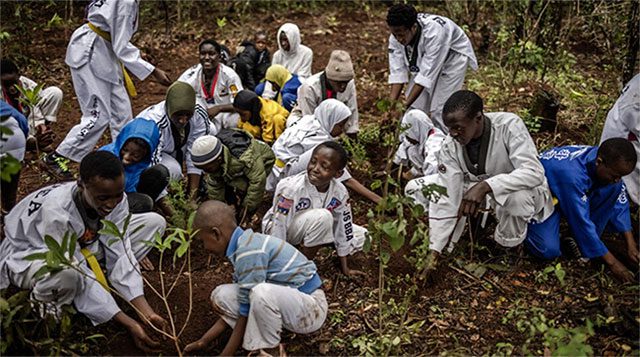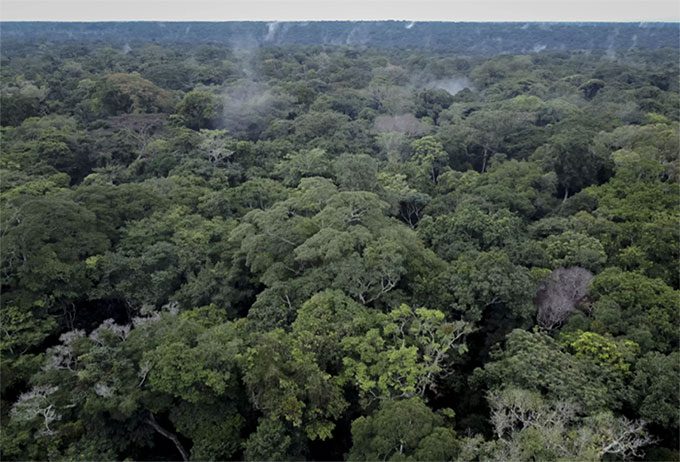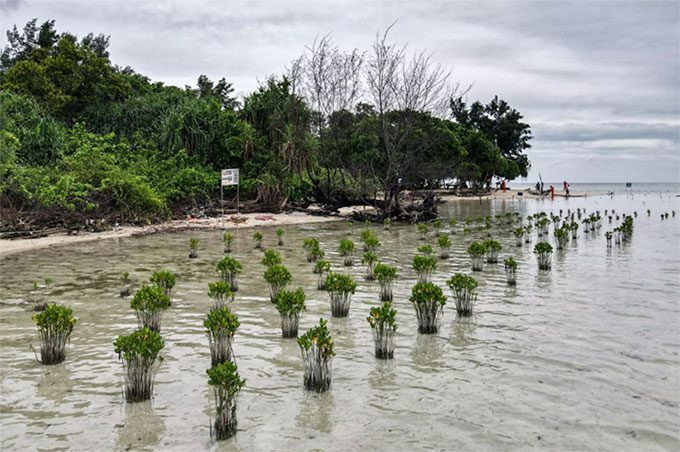Planting trees in the wrong places can actually contribute to global warming, scientists reported on Tuesday, March 26, and presented a new map identifying the best locations for reforestation and cooling the planet.
Greenery absorbs carbon dioxide, and restoring degraded forests or planting saplings to increase forest cover is a tool in the fight against climate change.
However, in some cases, more trees mean less sunlight is reflected from the Earth’s surface, causing the planet to absorb more heat, according to a study published in the journal Nature Communications on March 26.

Kenya has a national tree planting holiday on November 13 each year. (Photo: AFP).
Susan Cook-Patton, one of the co-authors of the study, stated: “In some places, reforestation will lead to negative climate outcomes.”
She explained that scientists previously understood that restoring tree cover leads to changes in “albedo” – the amount of solar radiation that is reflected back from the planet’s surface, but there was no evidence to support this.
By utilizing new maps, researchers can now assess the cooling effects of trees and the warming caused by reduced albedo for the first time.
The researchers found that projects that did not account for albedo in their equations overestimated the climate benefits of planting more trees by 20 to 80%.

Tropical environments like the Congo Basin have high carbon storage potential and little change in albedo. (Photo: AFP).
However, the new map provided by researchers also offers tools to help policymakers identify the best places to allocate scarce resources for maximum climate impact, Cook-Patton, a senior forest restoration scientist at The Nature Conservancy, noted.
She remarked: “There are indeed many places where restoring tree cover is a great idea to combat climate change. We are just trying to help people identify those spots.”
Albedo terrain has the highest reflectivity, with some areas reflecting up to 90% of the sun’s energy. These are the icy regions of the world with snow and ice as clean as mirrors.
It is one of the Earth’s main cooling agents. Along with land and oceans, it absorbs excess heat and emits greenhouse gases – the agents that cause global warming.

Mangrove planting on Pari Island to slow erosion caused by rising sea levels. (Photo: AFP)
This study shows that many countries have committed to planting billions of trees as a bulwark against global warming, but not all efforts yield the same effectiveness for the planet.
Tropical, humid environments like the Amazon and Congo Basins have high carbon storage potential and little change in albedo, making them ideal locations for restoring forest cover.
“The opposite is true in temperate grasslands and tropical savannas,” Cook-Patton stated.
She mentioned that even projects in the best locations could provide cooling benefits that are 20% less than estimated when accounting for changes in albedo.
However, she emphasized that forest restoration offers undeniable benefits for both humans and the planet, such as supporting ecosystems and providing clean air and water, along with many other advantages.
She stated: “We really don’t want our work to be a critique of the movement. But we can’t plant trees everywhere. We don’t have enough money, time, resources, people, or seedlings.”
She added: “So the real issue is to make the most of limited investments and get the greatest climate return per hectare invested.”


















































